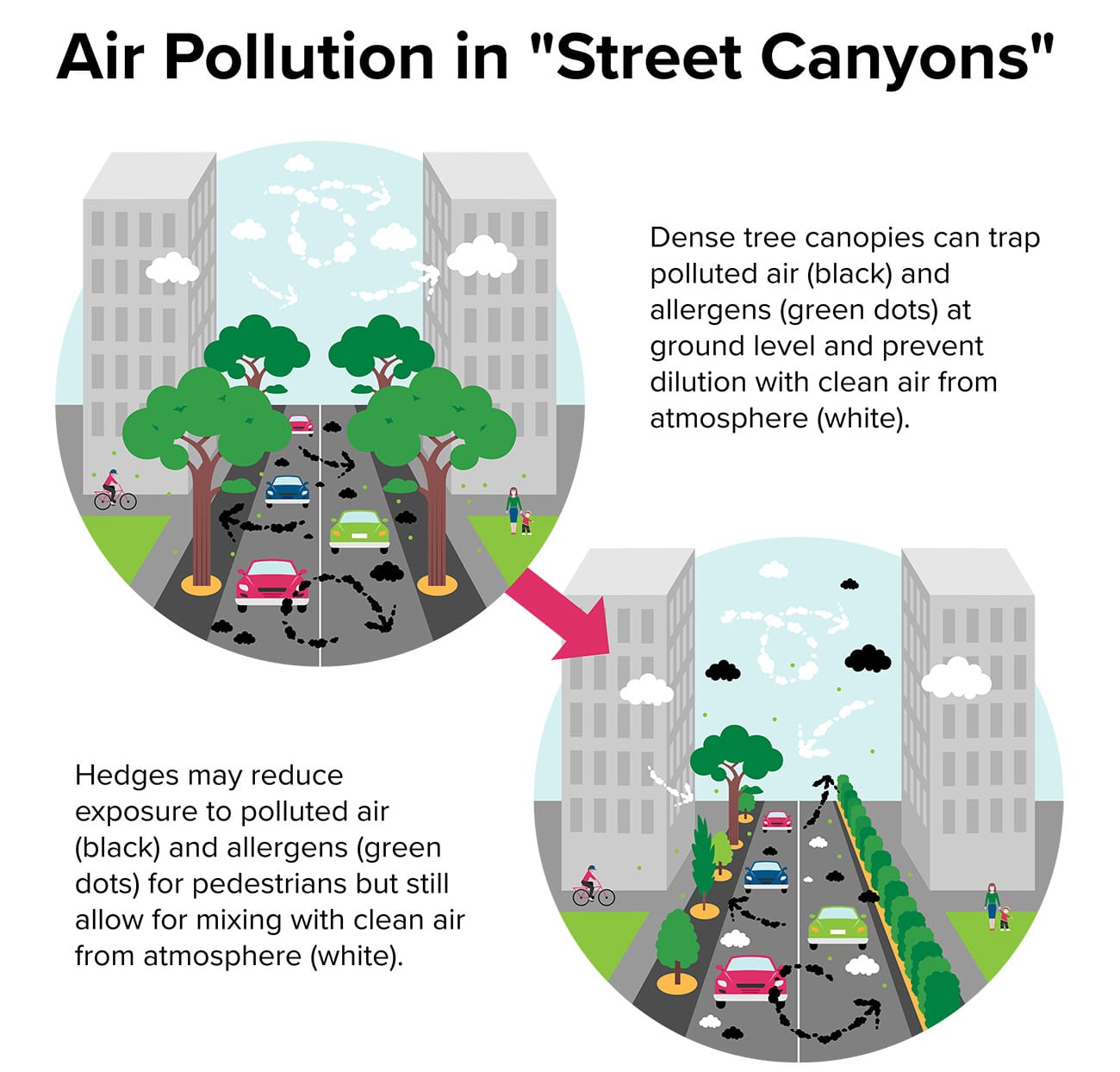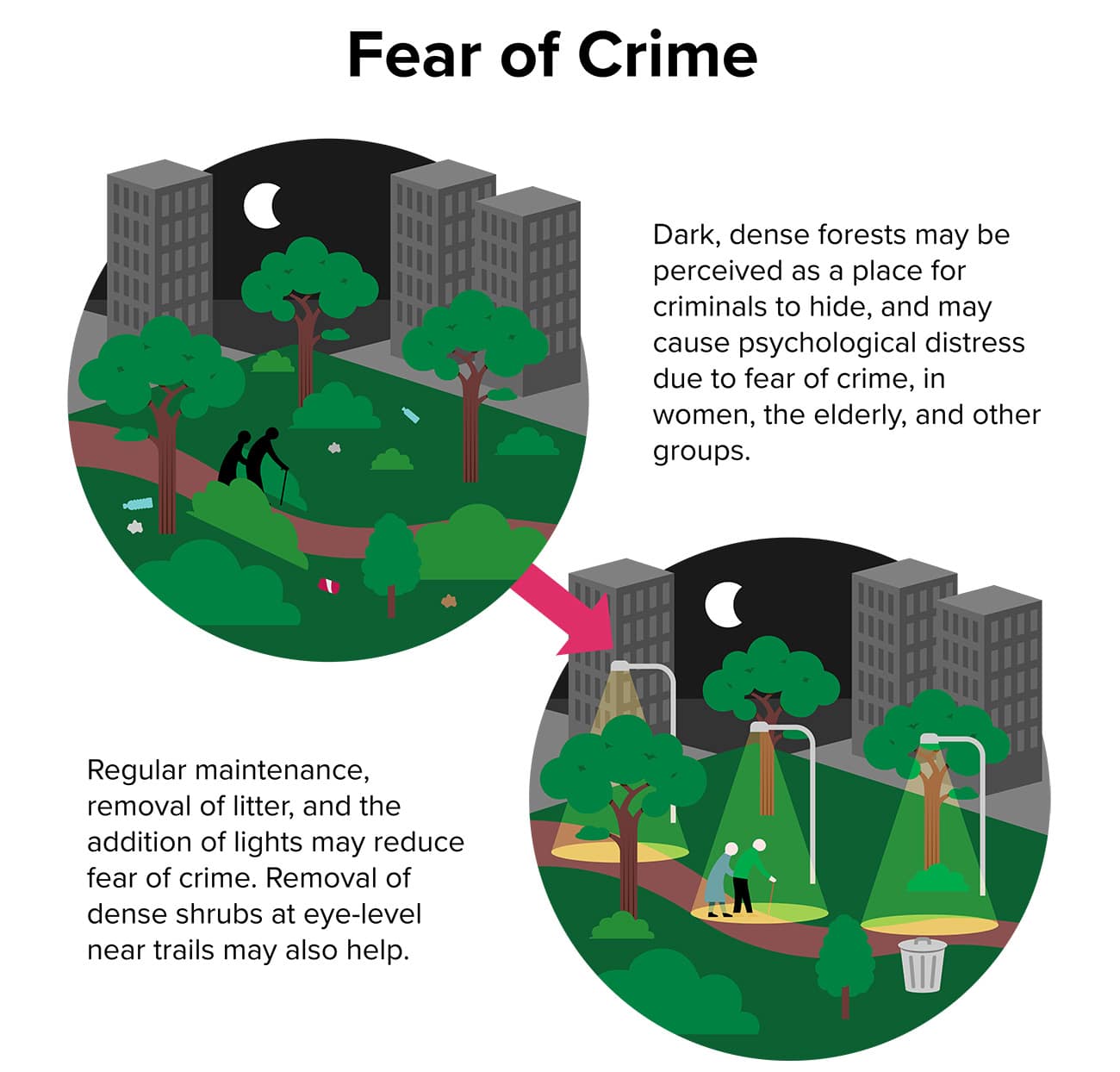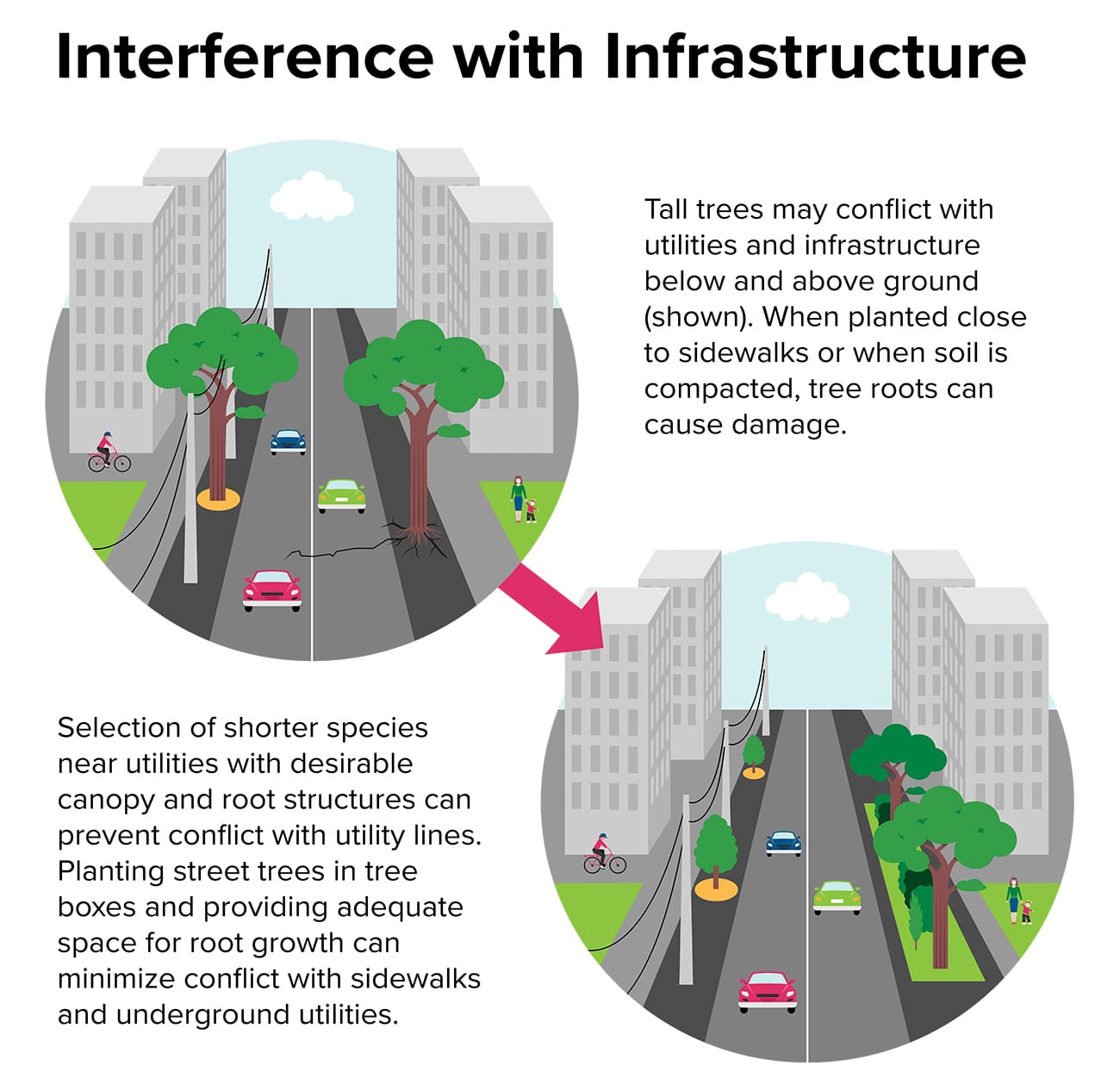What are some of the barriers to sustaining healthy urban forests, capable of delivering ecosystem services to many residents? (FAO, 2014; Salbitano et al, 2016)
- Multiple urgent priorities — Cities strive to provide clean water, safe transportation, food security, affordable housing, employment opportunities, and many other services to their residents. These urgent issues often define the urban policy agenda.
- Harsh urban conditions — As described on card 2, exposure to pollutants, extreme temperatures, and physical constraints challenge tree growth and survival.
- Lack of technical skills, knowledge of “best practices,” or expertise — Municipal agencies may not have the knowledge or resources they need to manage urban forests, or even know where to turn for external assistance.
- Tight budgets and limited investment interest— Despite the potential for economic and social benefits, cities often fail to value urban forests as more than an amenity, or to include them in cost-benefit assessments, which reduces incentive to invest. Urban forests also require maintenance. Management of the urban forest may present yet another demand on limited municipal resources.
What are some key aspects to consider during planning, implementation, and management of urban forests?
- Equity — Without integrated planning, urban greening projects run the risk of contributing to the displacement of vulnerable, low-income, or marginalized groups. (Wolch, Byrne, & Newell, 2014) This may be direct, as individuals are told to leave in order to create green space, or indirect, as rising property values following urban greening cause “ecological gentrification”. (Wolch, Byrne, & Newell, 2014) Urban greening can thus create greater disparities in social, health, and economic risks between groups. Meaningful engagement with residents and communities may prevent these unintended outcomes. Municipal policies should be transparent, inclusive, and evidence based on Social Equity.
- Fear of crime — Urban forests with dense shrubs may create fear of crime or reduce perceived safety, especially for women and minority groups. (Jansson et al, 2013) Poor lighting, litter, and graffiti in these spaces may reinforce this fear. (Jansson et al, 2013; Wolf, 2017) However, maintenance and management of these spaces to maintain lines of sight and tidy appearances may increase the perception of safety. (Jansson et al, 2013; Wolf, 2017)
- Air pollution — Although urban forests can remove pollutants, tree canopies in urban “street canyons” may also trap air polluted by vehicle emissions near ground level and reduce the circulation of cleaner air from the atmosphere. (Abhijith et al, 2017, Kumar et al, 2019) In these situations, planting dense rows of low hedges or smaller trees to create a barrier between pollutants and people may be preferable. (Abhijith et al, 2017, Kumar et al, 2019) Guidelines for planting for clean air exist (see Selected Resources card).
- Safety and conflicts with infrastructure — Urban trees may fall and injure people or damage property. They may also damage sidewalks or other infrastructure, which can also cause injury or conflict with overhead or underground utilities or solar panels. (Randrup, McPherson, & Costello, 2001) Careful site selection and proper maintenance may reduce these risks. Many urban forests are planted with trees that produce allergenic pollen, which causes discomfort and lowers quality of life for urban residents. (Eisenman et al, 2019; Cariñanos & Casares-Porcel, 2011) Trees that produce large amounts of pollen can be avoided, especially during large-scale tree planting initiatives. (Cariñanos & Casares-Porcel, 2011)
- Disease exposure — Urban forests and other green spaces may expose residents to disease vectors like ticks or mosquitos. (Karjalainen, Sarjala, & Raitio, 2010; Lõhmus & Balbus, 2015)
In general, however, many of the possible dis-benefits of urban forests can be avoided with proper planning, management, maintenance, and community input — especially when these concerns are explicitly incorporated into planning and decision-making. (Lõhmus & Balbus, 2015; Wolf, 2017) Participatory planning and research that incorporates local knowledge and perspectives can create equitable solutions that empower local communities. (Anguelovski et al, 2019)
Please see the Selected Resources card for more information on green infrastructure for air quality.


